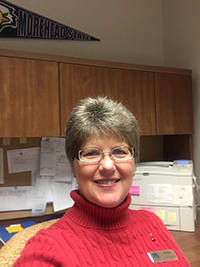In the Know
Founded in 1890, GFWC’s roots can be traced back to 1868 when Jane Cunningham Croly, a professional journalist, attempted to attend a dinner at an all-male press club honoring British novelist Charles Dickens. Croly was denied admittance based upon her gender, and in response, formed a woman’s club—Sorosis. In celebration of Sorosis’ 21st anniversary in 1889, Jane Croly invited women’s clubs throughout the United States to pursue the cause of federation by attending a convention in New York City. On April 24, 1890, 63 clubs officially formed the General Federation of Women’s Club by ratifying the GFWC constitution.
- Sorosis is the name of the club to which GFWC founder Jane Cunningham Croly belonged. Its name is a botanical term which means “an aggregation; a sweet flavor of many fruits, as in the pineapple.”
- Ellen Demorest, co-founder of Sorosis, was the inventor of mass-produced paper sewing patterns. They were included in her magazine, Demorest’s Mirror of Fashions. Jane Croly was the chief staff writer for the magazine.
- In 1906, GFWC secured the passage of the Pure Food and Drug Act.
- In 1916, GFWC suggested that special naturalization services be made part of Independence Day celebrations. It is still a tradition today.
- During World War I, GFWC raised $4,880,000 in Liberty Bonds, $90,000 for the Red Cross, $55,106 for camp libraries, and $89,788 for the YMCA.
- Jane Addams (founder of Hull House in Chicago), Julia Ward Howe (author of the “Battle Hymn of the Republic) and Eleanor Roosevelt were all clubwomen.
- GFWC was an important force in founding America’s first national park and supported the creation of the National Park Service. Each federation established a park within their state. Many, such as Everglades National Park, were handed over to the National Park Service and now are enjoyed by millions.
- GFWC began a campaign to name official state birds and flowers in the 1920’s.
- By 1933, GFWC had founded 75% of America’s public libraries, as well as pioneered the idea of bookmobiles.
- Roberta Campbell Lawson (GFWC President, 1935-1938) was half Delaware Indian. She published books on Native American music, as well as transcribed Lakota chants. When she died, her vast collection of Native American artifacts was donated to the Philbrook Museum in Oklahoma.
- During World War II, GFWC raised $101,617,750 to buy bombers, $154,459,132 to buy planes, and $90,794,182 to Victory Loans. State federations provided $234,834 in scholarships and $46,601 in loans to train nurses. The Federation recruited over 6,000 young women for the Cadet NurseCorps. Over 4,500 Juniors enlisted in the various services established for women.
- Many modern safety measures were early GFWC programs. The Federation had campaigns for seatbelts in all cars, streetlights on neighborhood streets and accurate labeling of food and medications.
- In 1994: GFWC founder Jane Cunningham Croly was inducted into the National Women’s Hall of Fame in Seneca Falls, New York.
- In 1997: GFWC renewed its commitment to libraries with the Libraries 2000 project. Over a five-year period, GFWC clubwomen raised and donated $13.5 million to public libraries and public-school libraries across the nation.
- During the 2000s, GFWC members contributed $180,000 for a fully-equipped ambulance for use by the New York Fire Department in response to the loss of equipment suffered during the terrorist attacks on September11, 2001.
- In 2011, GFWC introduced the Success For Survivors Scholarship, created as part of our efforts to highlight the importance of rebuilding one’s life after experiencing intimate partner violence. Each year, GFWC awards $2,500 scholarships to help intimate partner survivors obtain a post-secondary education that will offer them the chance to reshape their future by securing employment and gaining personal independence.
- In 2015, GFWC Celebrated its 125th Anniversary in Baltimore, Maryland.



